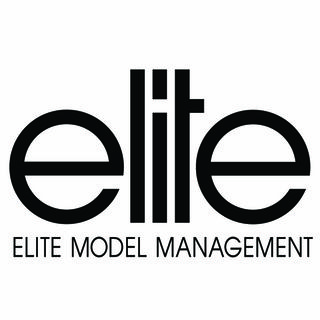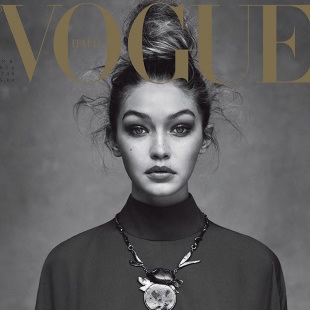In Asia, it becomes obvious quickly — thanks to the pervasive presence of advertisements and products — that the desire for white skin is incredibly common amongst consumers. With the quest for white skin being incredibly common, especially in countries like China, agencies and clients have a strong preference for Caucasian models. In this interview, we talk to Ramata Coulibaly (Models International Management), a French-Canadian model who tells us what it was like working in China as a model of colour.
TBM: When did you go to Shanghai? What agency were you with?
RC: I went to Shanghai in 2012 from June-October with Man Woman.
TBM: How did the idea come about to go model in Shanghai? Did you decide yourself or did your mother agency suggest it?
RC: I never thought I could model in China. But one morning while I was in Miami I got multiple text messages from my mother agency telling me to call them asap. When I did, they told me my main agent, who’s also a model, had shown my pictures to the owner of his agency in Shanghai and they wanted me right away.
TBM: How long did you end up staying?
RC: My contract was for 3 months but my mother agency extended it. I agreed to extend it but only if I could extend my entire stay in Asia for another 2 months to go to another nearby market like Hong Kong or Singapore. I ended up going to Hong Kong with Model Management.
TBM: Were there any other black models in your agency or who were in town as well? If so, did you ever discuss amongst yourselves your impression of modelling in Shanghai?
RC: There were no other black girls with my agency or even in Shanghai or Hong Kong in general. The other black models I saw were freelance models. But when I talked to them about work they told me it was hard to get signed with an agency and that they mostly did fashion shows or presentations. But for me it was the opposite. I mostly booked magazines and almost no shows other than the ones for international brands or clients for fashion week.
TBM: Being a model of colour in the fashion and modelling industry is already very tough. Sometimes clients say they already have “a black model” e.g. during fashion week, and don’t want to use any more. Was it tougher for you to find work in China than it was in Canada or Europe? Or the same?
RC: Yes it was really tough to find work in China, especially when I went to castings for Asian commercial clients. After 3 weeks I stopped going to castings because most of the clients would laugh when they saw my comp card.
After that, I told my agency I only wanted to do direct bookings. Not going to castings wasn’t a big deal because clients knew where to find me since I was the only black model in the city and word travels fast. But I did shoot for almost every fashion magazine, even for the ones where they usually don’t even use foreign models because they’re considered too commercial. And during fashion week, I walked in the most shows and opened or closed most of them as well.
TBM: In Asia, clients prefer Caucasian models with pale skin for their catalogues. What did you think of the modelling market in Shanghai?
RC: It was hard for me to book catalogues in China. I did a few but I mostly did the ones for really fashion brands. Based on my experience, there are two markets in Asia that people aren’t aware of: They have the really commercial clients who are the ones who mostly only hire Caucasian models and they have the really edgy brands which most Caucasians are never hired for because they rather use high fashion Asian models. These clients were the ones who hired me the most. I remember doing shows with only Asian models.
TBM: What sort of jobs did you find yourself primarily doing? Do you feel that your ethnicity affected what kind of jobs you booked and how many?
RC: I worked the most for fashion magazines. I don’t think it was just my ethnicity that affected the kind of jobs I booked and being a back model but also because I am a black fashion model. And Asia isn’t a market where they can easily find edgy models. The freelance black models were more commercial and they mostly did fashion shows and presentations.
TBM: How often were you working in comparison to the Caucasian models in your agency?
RC: In the beginning I was hardly working. My agency was overwhelmed. In the middle of my trip I started working a similar amount of jobs compared to the Caucasian models, working a couple days a week. But closer to the end of my trip I was working the most out of all the girls. I was working everyday and sometimes even twice a day because clients got used to me and started requesting me. I had jobs booked and options on hold for a month after my departure even though I wasn’t going to be in town.
TBM: Did a client ever dismiss you at a casting because of your ethnicity? If so, how did you deal with it?
RC: At castings, clients almost always dismissed me and laughed at me. I would feel humiliated and awkward so that’s why I stopped going to them. But my agency understood how I felt and not going to castings didn’t affect my work.
TBM: You’re in a country that openly and overtly prefers Caucasian skin and has a history of being openly discriminatory towards black foreigners (lots of African labourers move to China for work). From the shelves in shops to billboards, whitening creams and the use of white models is everywhere. What was it like dealing with that on a daily basis?
RC: At the beginning I was really overwhelmed and embarrassed. I wouldn’t leave my house alone and would hide. But after a while I got used to it and stopped taking offence to it. I started to do everything by myself with no shame.
TBM: Did you have natural hair in China or did you have extensions? Is it more difficult for black models working with natural hair?
RC: I had extensions and it was hard for the clients to work with them. Most hair stylists and even make up artists never even worked with black models so it was difficult for them to work with my extensions but most of them managed. Sometimes for presentations and shows I would even do my own hair and makeup.
TBM: Do you think Shanghai clients will ever be more open to using models of colour?
RC: I hope so. But it is slowly changing. For the first time in my life I did bridal shows and catalogues which I had never even done in the European market.
TBM: Do you ever plan to go back to Shanghai — or any other part of China for that matter — for work? Why or why not?
RC: Yes, I would definitely go back. I am presently working in Bali (but not as a model) and when my Shanghai agency found out I was close by, they booked me for jobs and clients also requested me for fashion week but unfortunately I couldn’t go. I have also received requests from other agencies in Beijing and Hangzhou.
TBM: What advice would you give to other black models interested in working in China? Would you recommend it? Why or why not?
RC: I would recommend it only to either mixed race models or commercial girls with big curly hair because clients are more open to those type of models. Or models with a strong and edgy book because it’ll be easier to get jobs from direct bookings.







Comments 0